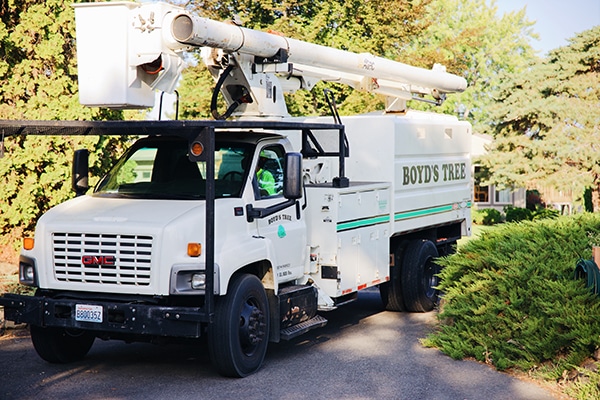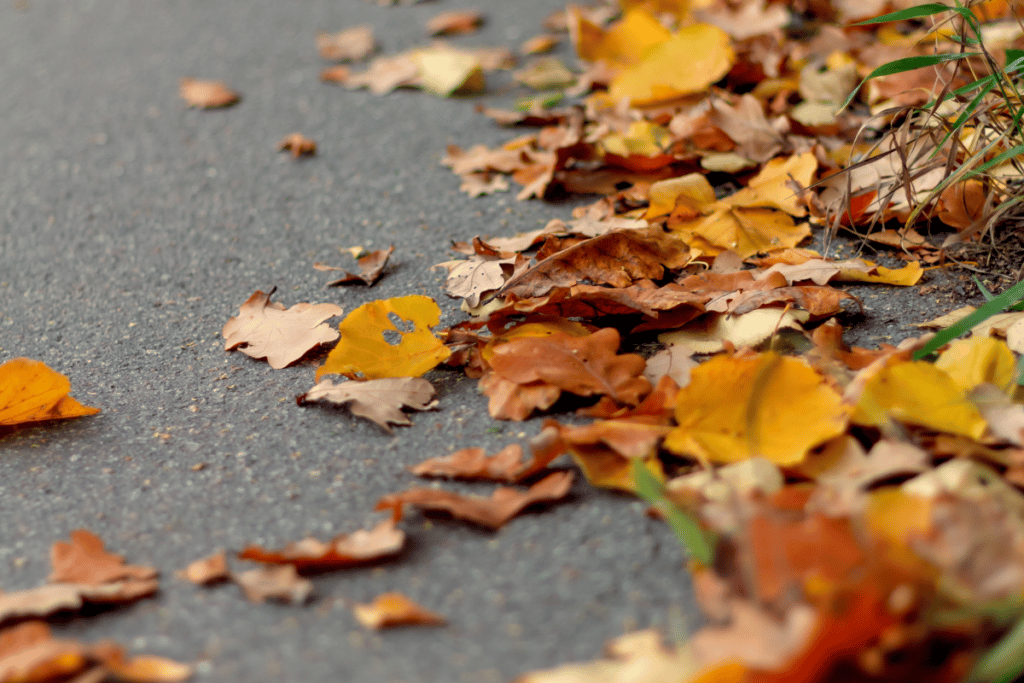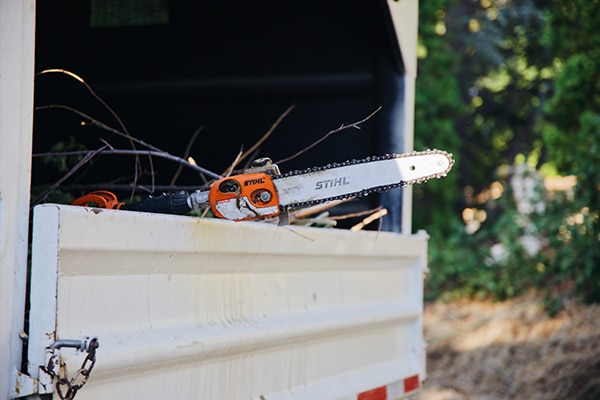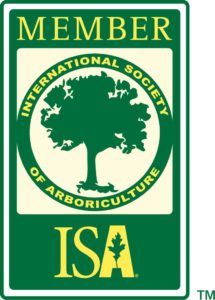Washington State is unofficially nicknamed the Evergreen State because of its rich, lush canopy of trees that dot much of the verdant landscape throughout the state. There are many diverse varieties of trees that are used for commercial and environmental purposes that include woodworking and watershed protection.
Among the most common tree species in the state are White Pine, Western Larch, Sitka Spruce, Western Hemlock, Western White Pine, White Bark Pine, Western Red Cedar, Douglas Fir, Ponderosa Pine, and Pacific Yew.
All of these beloved trees are susceptible to tree diseases that are caused by bacteria, fungi, viruses, insects, and environmental factors.
The following is a rundown of some of the diseases that could affect your trees.
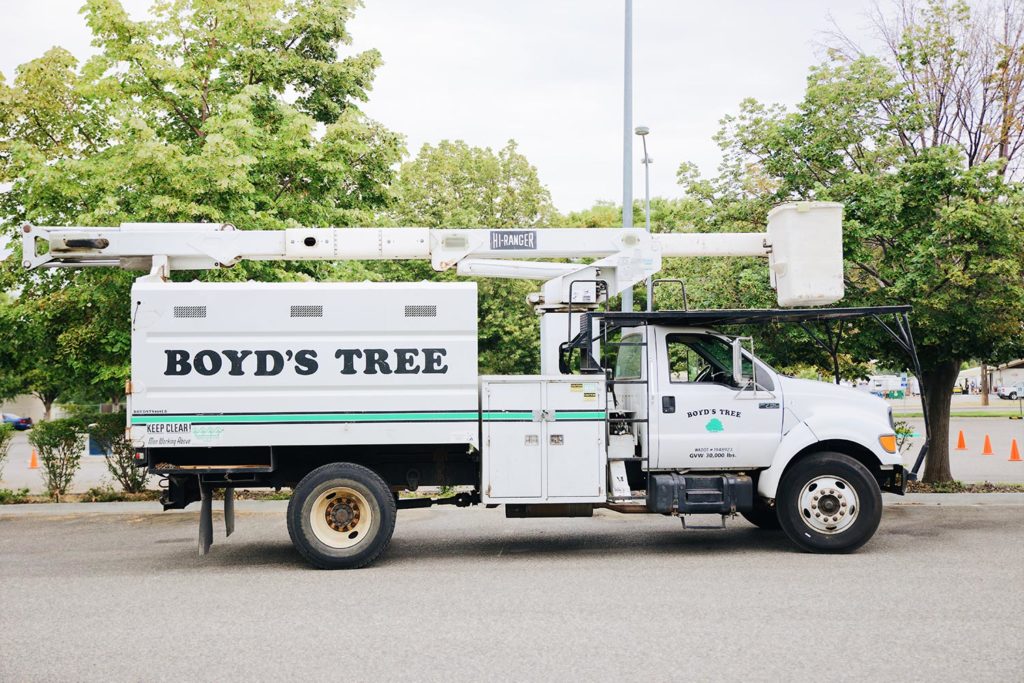
Foliar Diseases
Dothistroma Needle Blight
Dothistroma Needle Blight of pine trees causes the needles to turn brown and fall off. What’s more, severe infection for up to several years can cause the death of the tree.
The best way to manage this disease is maintaining good air circulation, mulching and preventing sprinklers from spraying needles.
The trees most likely to be impacted by this disease are Austrian pine and Ponderosa pine.
Red pine and Scots pine are most resistant to Dothistroma Needle Blight.
Fungicides can be used to protect trees from Dothistroma Needle Blight.
Identifying Dothistroma Needle Blight
Needle Symptoms: The symptoms include reddish-brown spots scattered on green needles. These spots grow into a band, encircling the needle. The tip of the needle becomes brown while the base of the needle remains green. These two sections are separated by a reddish-brown band. The transition from green to dead areas is abrupt. Over time, needles turn completely brown and fall off.
Older needles close to the trunk are more severely affected compared to the younger needles that are found towards the ends of the branches. Within the spots and bands, you could see tiny bumps pushing through the surface of the needle. These black, pimple-like structures produce fungal spores. Needles on the lower six feet of a tree are most noticeably impacted. Needles more than 20 feet high are almost never affected.
When Symptoms Appear: New infections typically appear in late summer to fall. Dead needles and spots may be viewed at any point during the year on a plant with the reoccurring disease.
Swiss Needle Cast
Swiss Needle Cast (SNC) is a foliage disease that affects Douglas-fir trees caused by the fungas Phaeocryptopus gaeumannii, which is specific to Douglas-fir trees and completes its life cycle on live foliage.
Swiss Needle Cast causes premature needle shed, which results in sparse tree crowns and reduced growth. It rarely kills the tree. The fungus that causes this disease is native to the historic range of Douglas-fir in western North America. However, the tree disease was first documented in Douglas-fir plantations in Switzerland in 1925.
Since the 1990s, there has been an epidemic of Swiss Needle Cast affecting hundreds of thousands of acres of coastal Douglas-fir forests in Washington, Oregon, and British Columbia.
Western Larch Foliar Disease
Symptoms: Casebearer damage to larch foliage can be seen in the early spring. The tops of mined needles will look straw-colored, curl over, and/or look wilted. By early summer, the foliage will turn reddish-brown.
By mid-June to mid-September, much of the damage visible in the spring will be concealed by green foliage that appears when new shoots elongate and/or if a second crop of needles develops. Mining in late September may brown the trees again, but by then the tree has completed its growth, so damage is minor.
The casebearer itself can be seen in the early spring attached to needles within their cases. Later in the spring, pupal cases can be found attached to needles or hanging from the ends of silk off larch trees. This can be quite a spectacular display if the tree has been heavily infested. The cases are straw-colored and less than a quarter of an inch long. Many landowners describe the cases as looking similar to grains of rice.
Root Diseases
Annosus Root Disease
Signs & Symptoms: In some cases, resin flow could be seen near the root collar as the tree defends itself against attack. Diseases pines may eventually show crown thinning and yellowing.
In pines, the disease is most active in the sapwood, killing tissues over time. In other hosts, the fungus grows initially in the inner wood after it reaches the root collar. Butt rot is a more prominent feature of the disease. Decay may be preceded by a pink to dull violet stain of the wood. Eventually, small, poorly defined pockets or pits are typically evident.
Small black flecks are usually found in well-developed pockets, and wood may separate along the annual rings (laminated rot). Then, the pockets are lost as the entire mass of wood becomes spongy or stringy.
Disease Cycle: The disease cycle in pines begins with freshly cut stumps. Wind-blown spores infect stumps of live trees within a few weeks of cutting. The fungus grows down into the stump roots. Where there are root contacts, the fungus may grow across and infect neighboring trees, eventually creating a root disease center.
Armillaria Root Disease
Armillaria Root Disease is caused by fungi, which live as parasites on living host tissue or as saprophytes on dead woody material. The fungus most often identified as causing the disease is Armillaria mellea.
These fungi are natural components of forests, where they live on the coarse roots and lower stems of conifers and broad-leaved trees.
As parasites, the fungi infect and kill trees that have already been weakened by competition, other pests, or climate factors. The fungi can also infect healthy trees, either killing them outright or predisposing them to attacks by other fungi or insects.
Black Stain Root Disease
Black Stain Root Disease (BSRD) is caused by a fungus that infects and kills several species of western conifers. The fungus kills the host tree by blocking water conduction to the foliage. The principal hosts are ponderosa pine, Jeffrey pine, and pinyon pine.
Trees infected by BSRD may have foliage symptoms typical of other root diseases. Trees typically show symptoms of gradual decline before they die. In the early stages of decline, height growth is reduced, and older needles turn yellow. As the disease progresses, older needles are shed permanently and new needles are somewhat stunted and yellow.
During advanced stages, new growth is sparse, yellowed and has a tufted appearance. Young trees might be killed by this disease in one to two years following infection. Older trees can take up to eight to 10 years to die. The disease is also marked by dark brown or black stains in roots or the outer wood which follow the annual rings.
Laminated Root Rot
Laminated Root Rot creates short-term snags of any size and all sizes of down wood, by killing or decaying the root system and butts of infected trees. It can create trees with hollow butts, which may continue to provide habitat when they fall.
Concentrations of down wood, useful habitat for many species of wildlife, are likely to occur in laminated root rot infection areas, typically with a corresponding decrease in canopy cover. Canopy gaps created by laminated root rot expand slowly, resulting in a more diverse stand structure and at times a more diverse plant species composition, as resistant or non-host trees, shrubs, and forbs are released or become established from the infection center outward, following the gradually expanding fringe of dying host trees.
Schweinitzii Root and Butt Rot
This disease is caused by the fungus Phaeolus schweintzii Patouillard, which is often called the velvettop fungus or cow-pie fungus because of the various forms of the conks.
The most obvious sign of the fungus is the distinctive conk that is usually only found on or near large trees. Annual conks occur on the ground near or growing from the base of infected trees or stumps.
Conks produce microscopic basidiospores when conditions are optimum in the fall. The spores are deposited on and subsequently percolate into the soil. Fine roots are the main infection court for basidiospores. Fresh trunk wounds caused by mechanical injury or
fire probably are not infected directly by spores but instead, the wounds exacerbate decay in previously infected roots and butts. Infection of Douglas-fir and possibly other species of trees results from direct invasion of root tips.
Dwarf Mistletoe’s
Douglas-fir Dwarf Mistletoe
Douglas-fir Dwarf Mistletoe is a destructive native parasite of Douglas-fir and is the primary disease agent affecting this tree over most of its range. Its distribution essentially coincides with that of Douglas-fir, from southern British Columbia to central Mexico.
It is the only dwarf mistletoe that occurs in all of the western states. The dwarf mistletoe occurs on many different Douglas-fir ecologic, successional, and topographic types.
Douglas-fir dwarf mistletoe has increased in abundance since the late 1800s. Douglas-fir stands are much more widespread in the Inland West largely as a result of nearly a century of fire suppression.
True Fir Dwarf Mistletoe
Fir dwarf mistletoe is common on true firs in the Cascade and Sierra Nevada Mountains. For example, surveys of national forests in Washington, Oregon, and California indicated that over 20 percent of the true fir forests in this region were infested with fir dwarf mistletoe.
Fir dwarf mistletoe parasitizes several tree species. White, grand, and red fir are the principal tree species affected by fir dwarf mistletoe.
Hemlock Dwarf Mistletoe
Hemlock Dwarf Mistletoe infests 21 percent of the western and mountain hemlock types in the Pacific Northwest. Severe infestations cause growth loss, wood quality reduction, and tree-killing. Damage is much more serious in stands over 100 years old than in younger stands.
Disease Spread: Seeds are sticky and forcibly shot as far as 50 feet from fruits in the fall. Seeds germinate in the spring, infection occurs on thin bark wood; the spread is most rapid in multi-stories stands.
Larch Dwarf Mistletoe
Larch Dwarf Mistletoe is present in 47 percent of the western larch type in the Pacific Northwest. Infected trees endure growth loss, wood quality reduction, and death.
Although western larch is the principal tree species affected by Larch Dwarf Mistletoe, it also parasitizes several other tree species.
Other Diseases
Elytroderma Disease of Ponderosa Pine
The most important disease of ponderosa pine in the Pacific Northwest and parts of adjacent regions is caused by a native fungus Elytroderma deformans. This disease also occurs on Jeffrey pine and occasionally on other pines.
The damage from this disease ranges from slight to moderate. But stands in widely separated localities are sometimes badly damaged during outbreaks. Although some mortality results, especially during severe outbreaks, the greatest impact is on growth.
The most prominent features of Elytroderma disease are the red-brown “flags” which appear in spring. Infected needles are reddish brown during spring and early summer of their second year.
Western Gall Rust
Western Gall Rust causes trunk cankers and branch galls on most of the species of two-and-three-needled pines in the West. It is especially common on lodgepole, ponderosa, and Digger pines.
Damage from gall rust in commercial strands occurs primarily in ponderosa pine in the Pacific Northwest. Forest plantations, particularly of ponderosa and Scotch pines, have also been attacked severely.
White Pine Blister Rust
A major threat to high elevation white pines and their ecosystems is a non – native fungus that causes the disease white pine blister rust. All of the North American white pines are susceptible to the rust. In those species studied, they show low levels of resistance and high mortality rates in all cases.
White pine blister rust has a complex life cycle that requires two hosts, a white pine and, most commonly, a currant or gooseberry plant.
Let Boyd’s Tree Service Help Keep Your Trees Healthy and Thriving
At Boyd’s Tree Service, we are a full-service tree and stump removal business that serves the Tri-Cities and surrounding areas. Boyd’s Tree Service is a fully insured and bonded tree removal contractor with many years of experience with tree care and tree removal.
You’ll find that at Boyd’s Tree Service – comprised of fourth-generation tree men – we provide the most comprehensive tree care. We take pride in enhancing the well-being, beauty and, aesthetics of your trees.
If you live in the Tri-Cities and surrounding areas and you would like more information about our tree services, or to schedule an appointment, we invite you to call Boyd’s Tree Service at (509) 585-4194.

